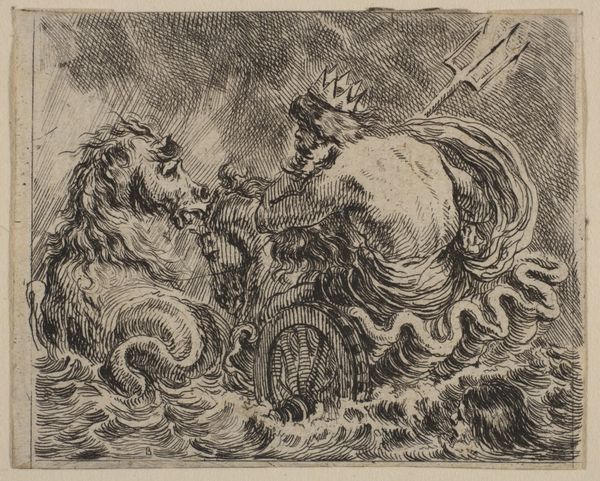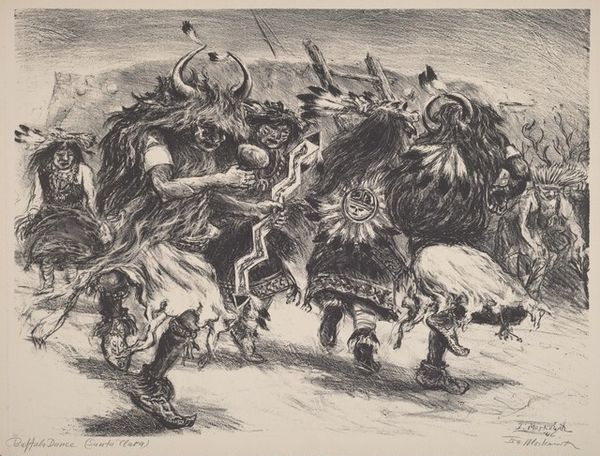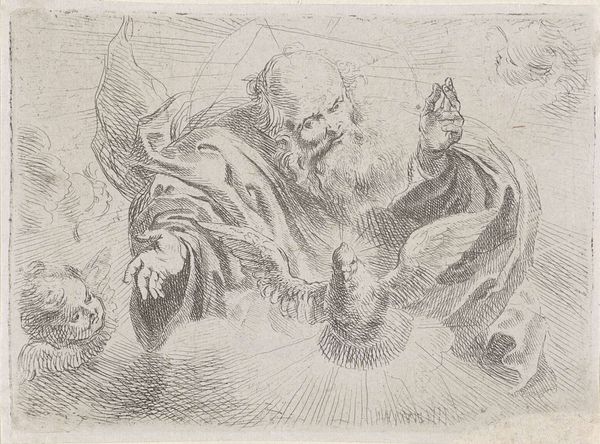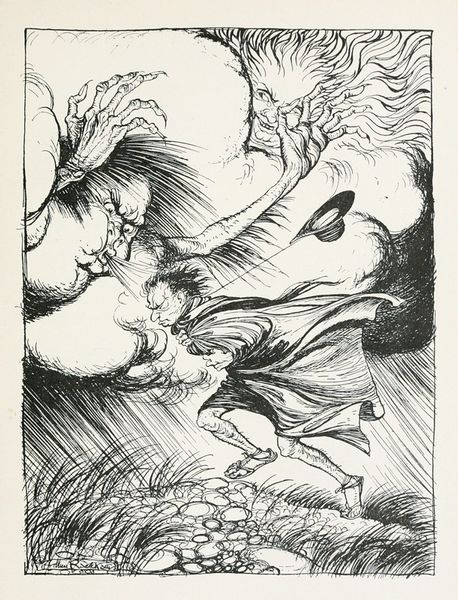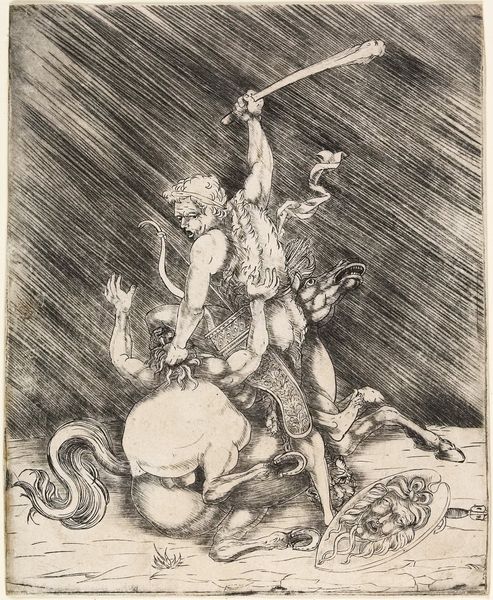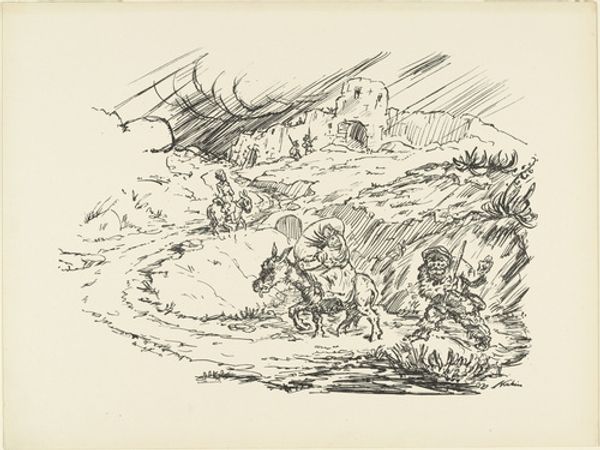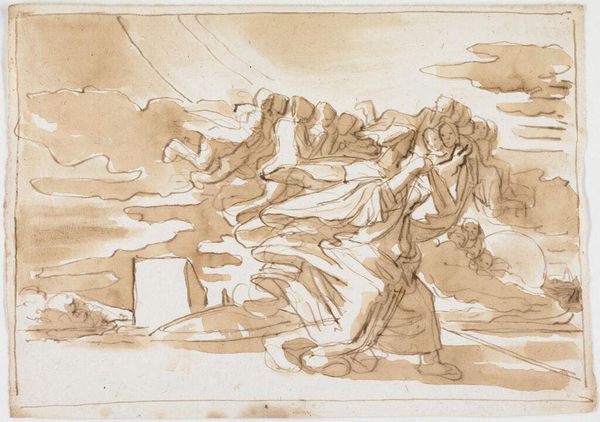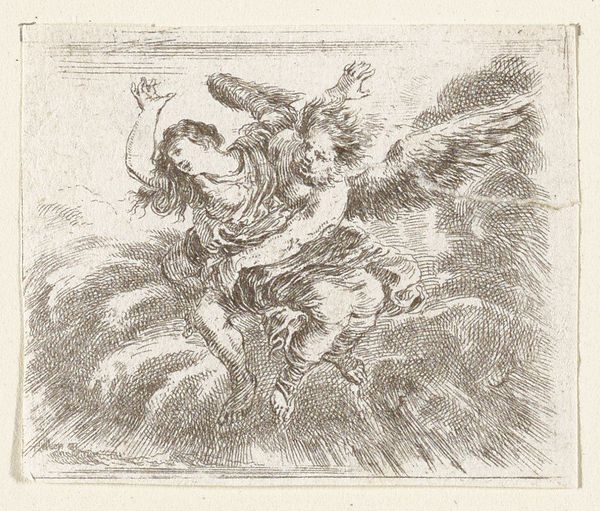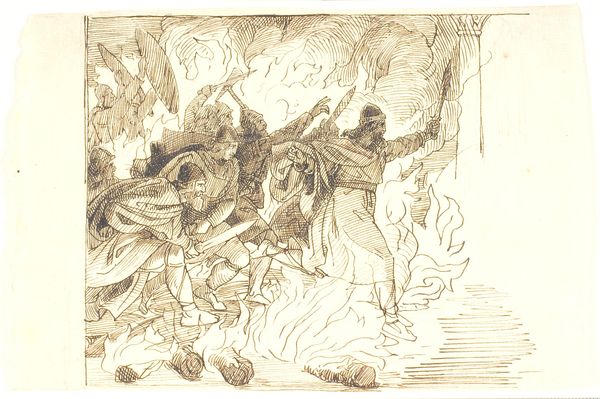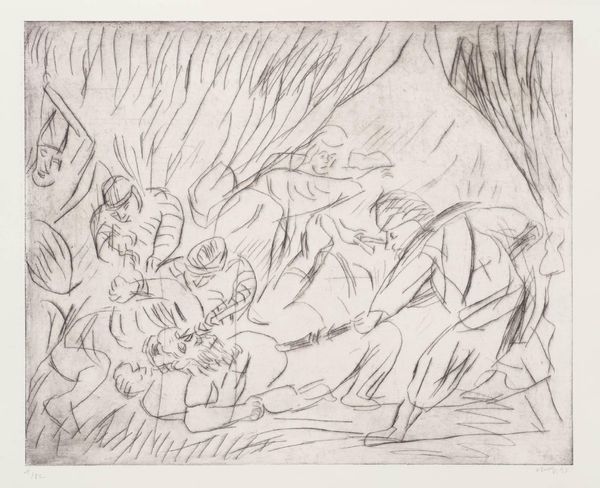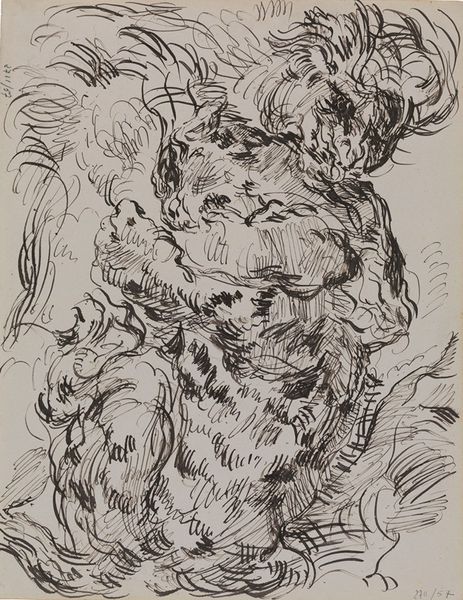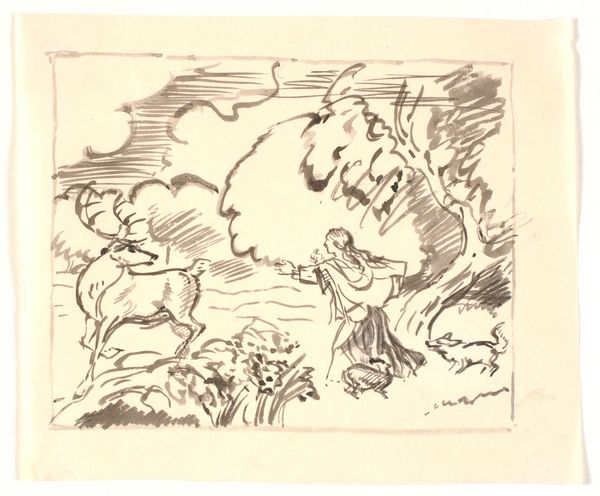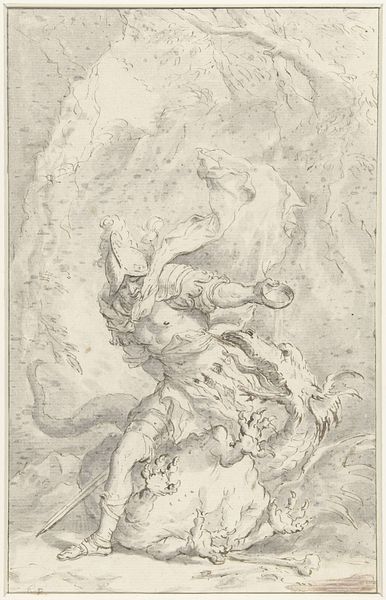
drawing, print, etching, ink, engraving
#
drawing
#
ink drawing
#
baroque
#
pen drawing
# print
#
etching
#
figuration
#
ink
#
engraving
Dimensions: 1 7/8 x 2 3/16 in. (4.76 x 5.56 cm) (sheet)
Copyright: Public Domain
Curator: Welcome. We're standing before Stefano della Bella's "Neptune," a 17th-century engraving rendered in ink. It resides here at the Minneapolis Institute of Art. What’s your immediate take? Editor: Tempestuous! All swirling lines and dynamic tension. It's a bit unnerving, as if the ocean itself is about to surge beyond the frame. Curator: Precisely. The composition adheres to Baroque sensibilities, utilizing dramatic diagonals and a pronounced contrast in line weight to create a sense of movement and grandeur. Neptune himself is centrally positioned, his form dominating the scene, though the lines almost look nervous. Editor: Indeed, and consider the socio-political implications. Neptune, the god of the sea, often symbolized power and control. In the 17th century, this imagery served as a potent reminder of the ruling class’s dominance. The churning sea could represent both opportunity and danger, echoing the era’s maritime expansion and its associated exploitation. Curator: I find the detail in the rendering quite captivating, the intricate cross-hatching that defines Neptune's musculature, the texture of the sea creature, and even the individual waves. Notice how the light catches the crown. The craftsmanship really is impressive. Editor: Though the lines themselves do strike me as a bit hurried. Speaking of the crown, who bestows the right to rule? Power comes and goes, as surely as waves that crash and recede. Also note how he carries the trident; it doesn't look too heavy or particularly used, as if it is merely a status symbol. What purpose is the sea god serving, if any? Curator: An interesting take, however, you're overlooking how Baroque art was designed to evoke an emotional response. The seemingly chaotic lines enhance that emotional experience for the viewer. Editor: Absolutely. I'd add that we cannot forget the larger narratives. Representations of Neptune, though seemingly benign mythological subjects, participate in complex ideological structures regarding power and societal norms. We must remember how these symbols have historically served to uphold hierarchies. Curator: I see your point. Despite its small scale, it offers volumes to explore visually and contextually. Editor: Exactly. It reminds us how even seemingly straightforward imagery is often layered with meaning and socio-political complexities.
Comments
No comments
Be the first to comment and join the conversation on the ultimate creative platform.
